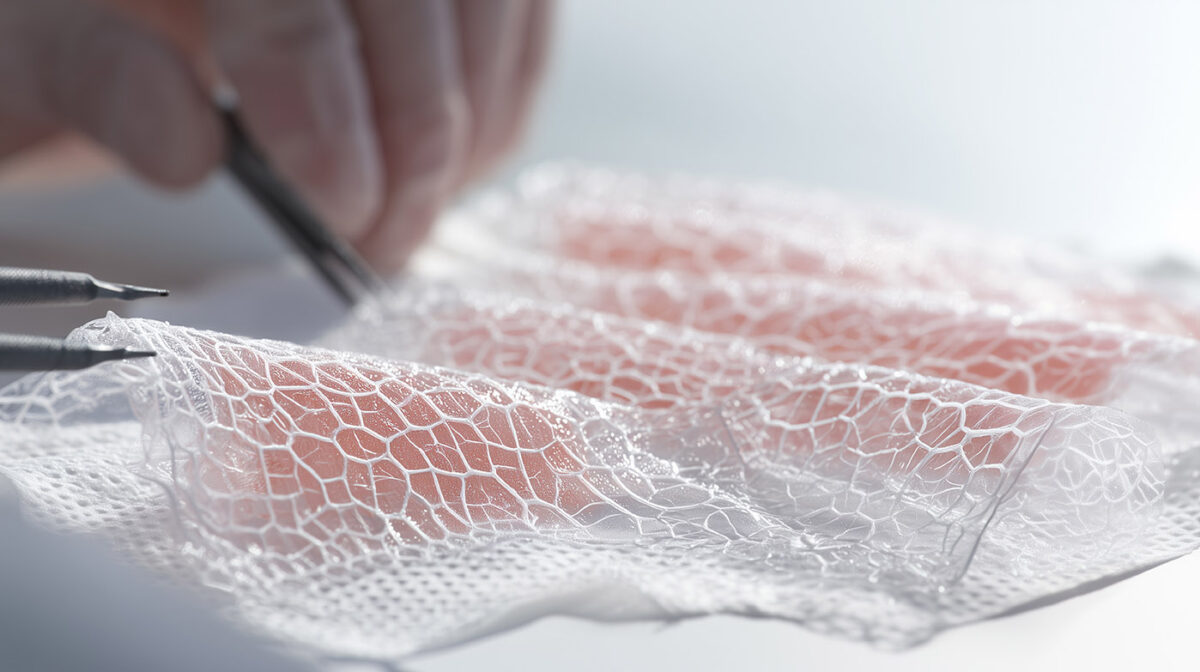Inside Materials – Aliphatic Polyesters

Aliphatic polyesters are among the most used materials in biomedical and pharmaceutical applications due to their biocompatibility and biodegradability.
These polymers are characterized by a linear chain of carbon atoms (aliphatic) and repeating ester groups in their molecular structure. They are commonly synthesized either by polycondensation of glycols and aliphatic dicarboxylic acids or by ring-opening polymerization (ROP) of lactones and cyclic diesters. This unique and versatile molecular structure has played a pivotal role in advancing biomedical technologies. In particular, their tunable mechanical and degradation properties make them highly valuable in designing medical devices and drug delivery systems.
You can also read: Enzymatic Polymer Degradation: How Does It Work?
Types and Key Properties
Currently, there are multiple types of aliphatic polyesters. For instance, these are the most common:
- Polyglycolide (PGA): This is the simplest and first aliphatic polyester ever used. Experts recognize it for its high strength and rapid degradation.
- Polylactide (PLA): It is derived from lactic acid and possesses properties similar to PET’s.
- Polycaprolactone (PCL): This semicrystalline polyester has enhanced biocompatibility and a relatively slow degradation rate.
- Poly(lactide-co-glycolide) (PLGA): It is a copolymer of PLA and PGA that provides a tunable degradation rate.
Biomedical Applications
This range of polymers provides properties that make them suitable for multiple biomedical applications. The table below provides some examples:
| Material | Feature/Function | Application |
| PGA, PLA | The body breaks them down into non-toxic molecules. | Surgical sutures |
| PLA, PLGA, PCL | They encapsulate and release drugs in a controlled manner. | Drug delivery systems |
| PLA, PLGA | They provide structural support as scaffolds. | Tissue engineering |
| PGA, PCL | Engineers tailor their strength and degradation rate for bone healing. | Bone fixation devices |
Real-World Products
Nowadays, these materials translate into cutting-edge commercial solutions such as Corbion’s PURASORB® PL38 PLA, Evonik’s RESOMER®, and BASF’s Ecovio® MD. PURASORB® PL38 is used in orthopedic devices like bone screws. RESOMER® enables targeted drug delivery in drug-eluting stents and implant coatings. Ecovio® MD offers high mechanical strength and biocompatibility that makes it suitable for surgical tools.
The Path Forward and Regulatory Trends
Despite a wide range of available products, researchers continue to enhance aliphatic polyesters, focusing on improved degradation control and functionality.
In parallel, regulatory shifts are driving growth. The U.S. FDA is expediting approval pathways for biodegradable implants in orthopedic, dental, and cardiovascular fields. Meanwhile, Europe’s Medical Device Regulation (MDR), set to take full effect in 2027, mandates sustainable and recyclable device components.
